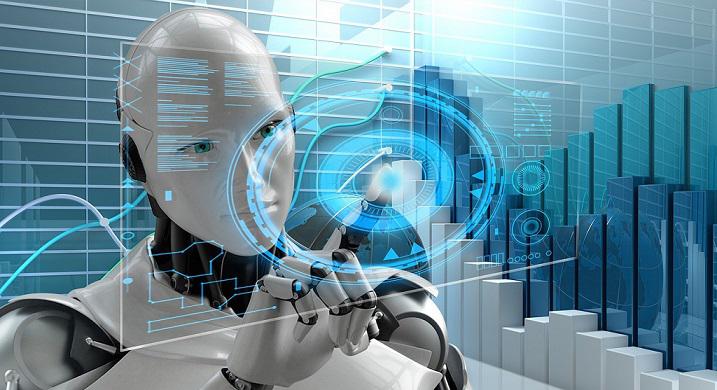
AI (Artificial Intelligence) is revolutionizing technology by creating machines that can think and act intelligently. At its core, AI is a branch of computer science dedicated to creating intelligent machines capable of mimicking human cognitive abilities. From the moment you unlock your smartphone with facial recognition to the personalized recommendations on your favorite shopping app, AI is silently working behind the scenes. But what exactly is AI, and how does it function? Buckle up, because we’re diving deep into the world of machine intelligence.
It a branch of computer science, works hand-in-hand with machine learning and deep learning. These fields focus on creating algorithms inspired by the human brain’s decision-making. These algorithms can “learn” from data, steadily improving their ability to categorize information or predict future outcomes.
Generative AI is experiencing a renaissance, and even doubters are taking notice. Unlike previous breakthroughs in computer vision, this time, natural language processing (NLP) is taking center stage. ChatGPT’s capabilities showcase how generative AI can not only learn and create human-like text, but also synthesize other forms of data – images, videos, code, and even scientific structures like molecules. This versatility signifies a significant leap forward in AI’s ability to understand and generate the world around us.
Types of AI(Artificial Intelligence):
Artificial Intelligence can be broadly categorized into two main classifications based on their capabilities and level of intelligence:
1. Capability-Based Types of AI:
Narrow AI (ANI): ANI is the most common type of AI, specializing in performing specific tasks exceptionally well. Think of chess-playing programs, spam filters, facial recognition software used on your phone, or recommendation algorithms on shopping sites. These excel in their designated areas but cannot perform other unrelated tasks.
General AI (AGI): AGI is a hypothetical type of AI would possess human-level intelligence across a wide range of domains. A machine that can learn any skill, understand and respond to complex questions, and adapt to new situations – that’s the dream of AGI. However, this technology is still in the realm of science fiction, with ongoing research to achieve it.
Artificial Superintelligence (ASI): ASI is even more theoretical concept refers to an AI surpassing human intelligence in all aspects. A machine that can not only outperform humans in intellectual tasks but also surpass us in creativity, problem-solving, and emotional intelligence. While the development of ASI is highly debated, it raises important questions about the future and the ethical implications of such powerful technology.
2. Learning-Based Types of AI:
These categories focus on how AI learns and improves its capabilities over time:
Machine Learning (ML): This is a core subfield of AI where algorithms learn from data without being explicitly programmed. They can identify patterns, make predictions, and improve their performance as they are exposed to more data. This underpins many of the narrow AI applications we see today.
Deep Learning: A subfield of machine learning inspired by the structure and function of the human brain. Deep learning uses artificial neural networks with multiple layers to process complex data like images, speech, and text. This is a powerful technique for tasks like image recognition and natural language processing (like ChatGPT).
Machine Learning Vs Deep Learning:
Machine Learning: Unveiling Patterns from Data
Machine learning stands as a pillar of Artificial Intelligence, enabling computers to learn and improve from data without needing explicit instructions. Unlike traditional coding, machine learning algorithms act like detectives, uncovering hidden patterns within data sets. This data can come in various forms, from numbers and text to images and even audio. Machine learning’s versatility allows it to tackle a wide range of tasks, from classifying information (like spam filters) to predicting future outcomes (like sales figures) and even grouping similar data points together (like customer segmentation). Perhaps the most appealing aspect of machine learning is its transparency. We can often understand the logic behind the decisions these models make, allowing for human oversight and adjustments if needed. This level of control has made machine learning an essential tool across numerous industries, from finance and healthcare to manufacturing and entertainment.
Deep Learning: Diving Deeper with Artificial Neural Networks
Deep learning, a powerhouse within machine learning, takes inspiration from the human brain. Unlike traditional machine learning algorithms, deep learning leverages artificial neural networks – complex, layered structures mimicking the brain’s processing capabilities. These networks progressively extract intricate features from data, layer by layer. Imagine learning a language by immersion, where you pick up nuances through constant exposure. Deep learning excels at handling complex data formats like images, video, and natural language, making it perfect for tasks requiring high pattern recognition. From image and speech recognition to natural language processing and machine translation, deep learning is revolutionizing various fields. However, these powerful models come with challenges. Their complex structure can make them opaque, like black boxes where the decision-making process is difficult to understand. Additionally, deep learning often requires massive amounts of data and significant computational power for training, which can be a barrier for some applications. Despite these limitations, deep learning is pushing the boundaries of what’s possible in AI, from self-driving cars navigating intricate environments to medical diagnoses through image analysis.
Artificial Intelligence Applications:
Speech recognition
Speech recognition, also known as automatic speech recognition (ASR) or speech-to-text, acts as a translator between spoken words and written language. It leverages the power of Natural Language Processing (NLP) to understand human speech and convert it into a digital format. This technology is changing the way we interact with our devices. Imagine using your voice to search the web, dictate text messages, or control your smart home – that’s the power of speech recognition in action. Many mobile devices, like your smartphone with its friendly assistant (think Siri!), integrate speech recognition to offer hands-free features and increased accessibility. So, the technology can be particularly helpful for users with visual impairments or those who prefer voice interaction.
Computer vision
Computer Vision technology enables computers and systems to derive meaningful information from digital images, videos and other visual inputs, and based on those inputs, it can take action. This ability to provide recommendations distinguishes it from image recognition tasks. Powered by convolutional neural networks, computer vision has applications within photo tagging in social media, radiology imaging in healthcare, and self-driving cars within the automotive industry.
Supply chain
Adaptive robotics act on Internet of Things (IoT) device information, and structured and unstructured data to make autonomous decisions. NLP tools can understand human speech and react to what they are being told. Predictive analytics are applied to demand responsiveness, inventory and network optimization, preventative maintenance and digital manufacturing. Search and pattern recognition algorithms—which are no longer just predictive, but hierarchical—analyze real-time data, helping supply chains to react to machine-generated, augmented intelligence, while providing instant visibility and transparency.
References: ibm.com






